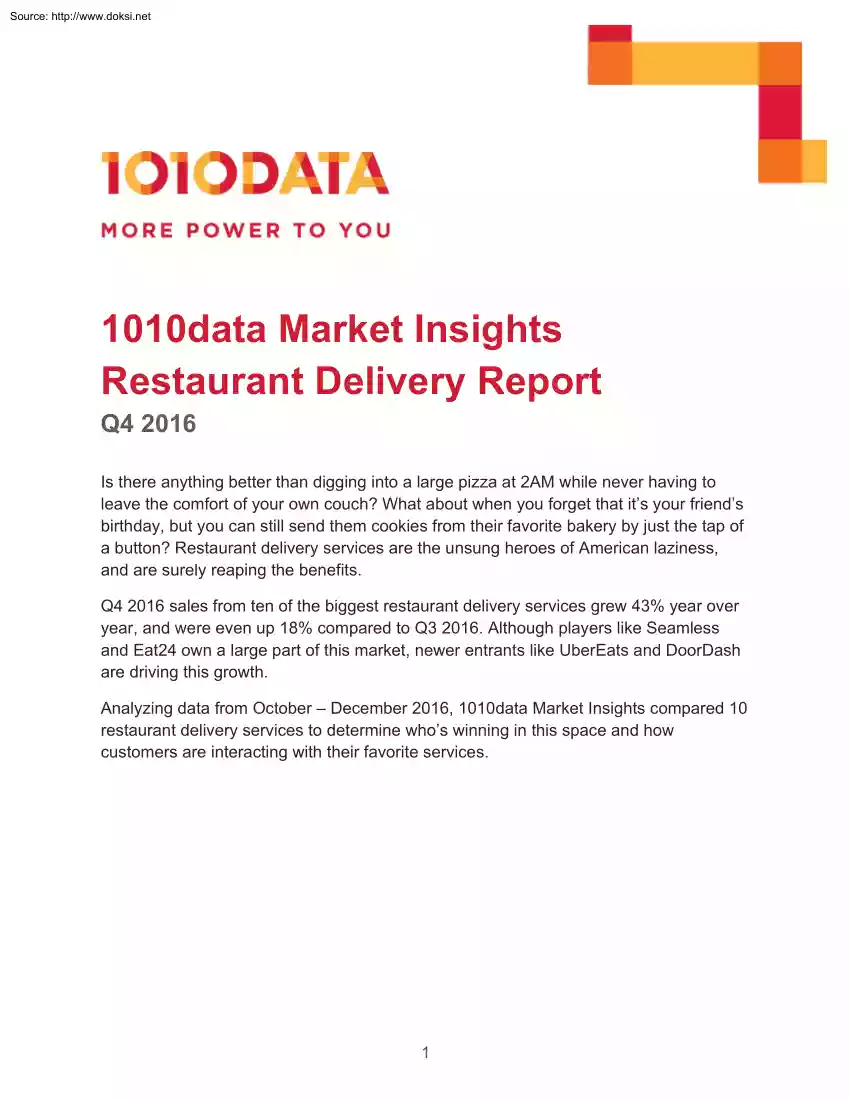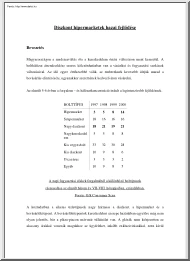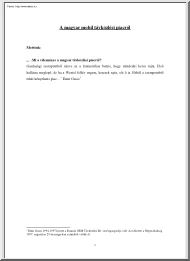Datasheet
Year, pagecount:2016, 7 page(s)
Language:English
Downloads:3
Uploaded:December 19, 2019
Size:984 KB
Institution:
-
Comments:
Attachment:-
Download in PDF:Please log in!
Comments
No comments yet. You can be the first!Most popular documents in this category
Content extract
Source: http://www.doksinet 1010data Market Insights Restaurant Delivery Report Q4 2016 Is there anything better than digging into a large pizza at 2AM while never having to leave the comfort of your own couch? What about when you forget that it’s your friend’s birthday, but you can still send them cookies from their favorite bakery by just the tap of a button? Restaurant delivery services are the unsung heroes of American laziness, and are surely reaping the benefits. Q4 2016 sales from ten of the biggest restaurant delivery services grew 43% year over year, and were even up 18% compared to Q3 2016. Although players like Seamless and Eat24 own a large part of this market, newer entrants like UberEats and DoorDash are driving this growth. Analyzing data from October – December 2016, 1010data Market Insights compared 10 restaurant delivery services to determine who’s winning in this space and how customers are interacting with their favorite services. 1 Source:
http://www.doksinet WHO’S WINNING? MARKET SHARE Seamless is the leading restaurant delivery service based on Q4 2016 sales. Our data shows that Seamless owns more than a quarter of this market. GrubHub and Seamless combined accounted for more than half of all sales in Q4 and had at least 2x more share than their closest competitors, Eat24 and UberEats (Chart 1). While modest, UberEats’ share is impressive considering they entered the market just under two years ago. Caviar and Foodler both began as regional services (Philadelphia and Boston, respectively), but made traction in Q4 as they expanded nationally in 2016. 2 Source: http://www.doksinet GROWTH Despite Seamless’ dominance in this space, the delivery service had modest growth in Q4. Postmates and GrubHub grew more than 50%, while DoorDash nearly doubled since Q4 2015 (Chart 2). Although this growth is impressive, nothing compares to the explosive growth experienced by UberEats. They had 17x more growth than their
closest competitor, DoorDash. In December 2015, UberEats launched as a separate app (it had previously been a component of the Uber app), which allowed the service to expand rapidly throughout 2016. Although 1010data found that overall growth in this category was 42%, some services experienced a decline in Q4 2016. One of those was Munchery, which struggled with losses from dishes that never got sold in 2016. 3 Source: http://www.doksinet CUSTOMER ACTIVITY ORDER FREQUENCY Restaurant delivery services can gauge customer engagement by tracking order frequency. For the purpose of this analysis, we defined order frequency as the average number of orders placed by a customer in one week. Chart 3 shows that regardless of delivery service, customers who place orders do so at least once a week. For services like Delivery.com and Seamless, that frequency is higher, with at least 2 meals a week being delivered. Assuming that the average person eats 21 meals in a week, restaurant delivery is
responsible for 5-10% of customers’ meals in a given week. The average American eats out 4.5 times a week, so restaurant delivery customers are dedicating a quarter of dined out meals to these services. 4 Source: http://www.doksinet ORDER TOTAL The average order total across restaurant delivery services is $31. On Chart 4, we start to see the variety in order totals that exists among delivery services. UberEats has the smallest average order total of $26, while Caviar has the highest average basket size at $43. The variance among order totals is driven in part by participating restaurant mix, but could also be a matter of delivery fees and tipping. Unlike other services, UberEats does not promote tipping but does charge a ‘booking fee’ of $3-$5. Meanwhile, Caviar has a much higher delivery fee of $9.99 since they deliver from more high-end restaurants than other services. Seamless and Foodler don’t charge a delivery fee unless the restaurant requires it, but they do
typically promote tipping when customers place an order. Once you take all of that into account, most consumers using these services are ordering an average of $25 worth of food. 5 Source: http://www.doksinet ORDER TIME Most people would expect peak order time for restaurant delivery to be around dinnertime. Chart 5 confirms that for most services, delivery peaks from 5PM-8PM and most of these services experience a smaller peak around lunchtime between 11AM-1PM. Perhaps less expected is Munchery’s spike at 9AM Munchery has different menus daily and items can sell out days in advance. It could be that their customers are planning their dinner in advance to ensure they get the meal they want. 6 Source: http://www.doksinet KEY TAKEAWAYS It’s evident that restaurant delivery services have become a staple of American food culture. This industry is encroaching on the share of wallet that consumers dedicate to both restaurants and grocers. Consumers who use these services are
ordering at least one meal per week, typically for dinner, and spending an average of $25 per order. More established players have a stronghold in this space, but UberEats’ explosive growth, as well as Munchery’s decline, proves that the consumers are open to trying different business models. These services will continue to expand because there will always be a market full of lazy Americans for them. METHODOLOGY 1010data utilizes a number of sources of consumer spending data representing millions of consumers to provide an accurate assessment of online and offline retail sales, market share, and more. Our data enables clients to track consumer behavior using high-quality, granular datasets that are often difficult to source, cleanse, and consolidate. 7
http://www.doksinet WHO’S WINNING? MARKET SHARE Seamless is the leading restaurant delivery service based on Q4 2016 sales. Our data shows that Seamless owns more than a quarter of this market. GrubHub and Seamless combined accounted for more than half of all sales in Q4 and had at least 2x more share than their closest competitors, Eat24 and UberEats (Chart 1). While modest, UberEats’ share is impressive considering they entered the market just under two years ago. Caviar and Foodler both began as regional services (Philadelphia and Boston, respectively), but made traction in Q4 as they expanded nationally in 2016. 2 Source: http://www.doksinet GROWTH Despite Seamless’ dominance in this space, the delivery service had modest growth in Q4. Postmates and GrubHub grew more than 50%, while DoorDash nearly doubled since Q4 2015 (Chart 2). Although this growth is impressive, nothing compares to the explosive growth experienced by UberEats. They had 17x more growth than their
closest competitor, DoorDash. In December 2015, UberEats launched as a separate app (it had previously been a component of the Uber app), which allowed the service to expand rapidly throughout 2016. Although 1010data found that overall growth in this category was 42%, some services experienced a decline in Q4 2016. One of those was Munchery, which struggled with losses from dishes that never got sold in 2016. 3 Source: http://www.doksinet CUSTOMER ACTIVITY ORDER FREQUENCY Restaurant delivery services can gauge customer engagement by tracking order frequency. For the purpose of this analysis, we defined order frequency as the average number of orders placed by a customer in one week. Chart 3 shows that regardless of delivery service, customers who place orders do so at least once a week. For services like Delivery.com and Seamless, that frequency is higher, with at least 2 meals a week being delivered. Assuming that the average person eats 21 meals in a week, restaurant delivery is
responsible for 5-10% of customers’ meals in a given week. The average American eats out 4.5 times a week, so restaurant delivery customers are dedicating a quarter of dined out meals to these services. 4 Source: http://www.doksinet ORDER TOTAL The average order total across restaurant delivery services is $31. On Chart 4, we start to see the variety in order totals that exists among delivery services. UberEats has the smallest average order total of $26, while Caviar has the highest average basket size at $43. The variance among order totals is driven in part by participating restaurant mix, but could also be a matter of delivery fees and tipping. Unlike other services, UberEats does not promote tipping but does charge a ‘booking fee’ of $3-$5. Meanwhile, Caviar has a much higher delivery fee of $9.99 since they deliver from more high-end restaurants than other services. Seamless and Foodler don’t charge a delivery fee unless the restaurant requires it, but they do
typically promote tipping when customers place an order. Once you take all of that into account, most consumers using these services are ordering an average of $25 worth of food. 5 Source: http://www.doksinet ORDER TIME Most people would expect peak order time for restaurant delivery to be around dinnertime. Chart 5 confirms that for most services, delivery peaks from 5PM-8PM and most of these services experience a smaller peak around lunchtime between 11AM-1PM. Perhaps less expected is Munchery’s spike at 9AM Munchery has different menus daily and items can sell out days in advance. It could be that their customers are planning their dinner in advance to ensure they get the meal they want. 6 Source: http://www.doksinet KEY TAKEAWAYS It’s evident that restaurant delivery services have become a staple of American food culture. This industry is encroaching on the share of wallet that consumers dedicate to both restaurants and grocers. Consumers who use these services are
ordering at least one meal per week, typically for dinner, and spending an average of $25 per order. More established players have a stronghold in this space, but UberEats’ explosive growth, as well as Munchery’s decline, proves that the consumers are open to trying different business models. These services will continue to expand because there will always be a market full of lazy Americans for them. METHODOLOGY 1010data utilizes a number of sources of consumer spending data representing millions of consumers to provide an accurate assessment of online and offline retail sales, market share, and more. Our data enables clients to track consumer behavior using high-quality, granular datasets that are often difficult to source, cleanse, and consolidate. 7





 When reading, most of us just let a story wash over us, getting lost in the world of the book rather than paying attention to the individual elements of the plot or writing. However, in English class, our teachers ask us to look at the mechanics of the writing.
When reading, most of us just let a story wash over us, getting lost in the world of the book rather than paying attention to the individual elements of the plot or writing. However, in English class, our teachers ask us to look at the mechanics of the writing.